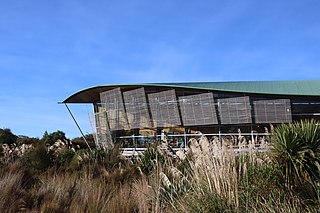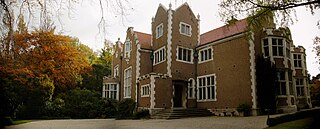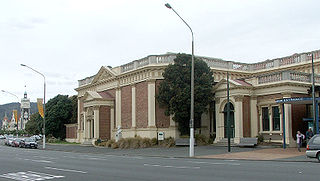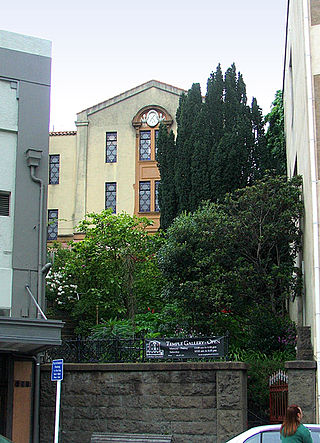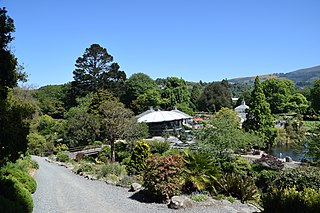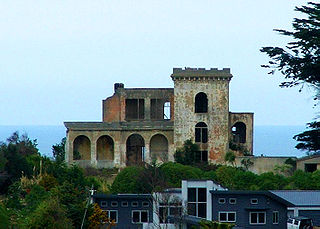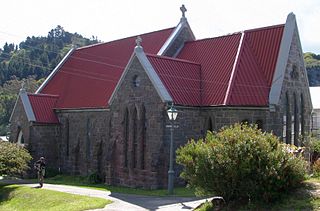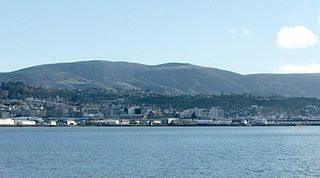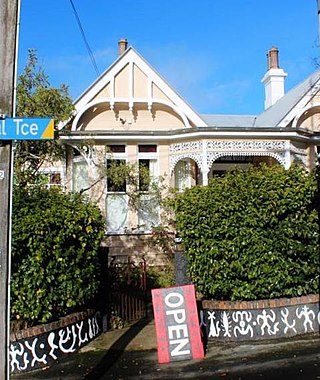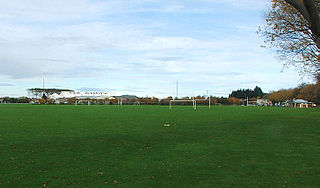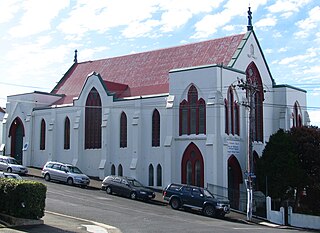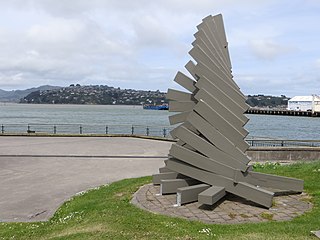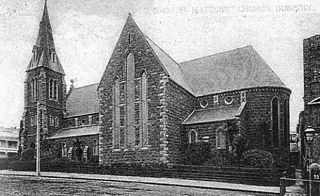19 Sights in Dunedin, New Zealand (with Map and Images)
Legend
Welcome to your journey through the most beautiful sights in Dunedin, New Zealand! Whether you want to discover the city's historical treasures or experience its modern highlights, you'll find everything your heart desires here. Be inspired by our selection and plan your unforgettable adventure in Dunedin. Dive into the diversity of this fascinating city and discover everything it has to offer.
Sightseeing Tours in Dunedin1. Turnstile Building of former Carisbrook Stadium
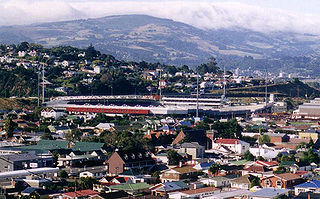
Carisbrook was a major sporting venue in Dunedin, New Zealand. The city's main domestic and international rugby union venue, it was also used for other sports such as cricket, football, rugby league and motocross. In 1922, Carisbrook hosted the first international football match between Australia and New Zealand. The hosts won 3–1.
2. Larnach Castle
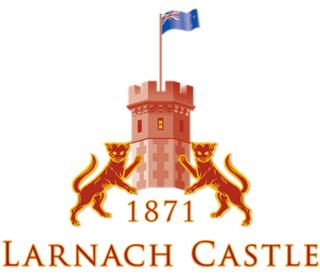
Larnach Castle is a mock castle on the ridge of the Otago Peninsula within the limits of the city of Dunedin, New Zealand, close to the small settlement of Pukehiki. It is one of a few houses of this scale in New Zealand. The house was built by the prominent entrepreneur and politician, William Larnach. Since 1967, the castle has been privately owned by the Barker family, and opened as a tourist attraction, as "New Zealand's only castle".
3. Orokonui Ecosanctuary
Orokonui Ecosanctuary, called Te Korowai o Mihiwaka in Māori, is an ecological island wildlife reserve developed by the Otago Natural History Trust in the Orokonui Valley between Waitati and Pūrākaunui, New Zealand, 20 kilometres (12 mi) to the north of central Dunedin.
4. Olveston Historic Home
Olveston Historic Home is a substantial house and museum in an inner suburb of Dunedin, New Zealand. The house was designed by Ernest George in the Jacobean style in the early 20th century for the Theomin family. When Dorothy Theomin died in 1966, the house, garden and contents were gifted to the city, and are now open to the public. The house is decorated and furnished much as it was when the family lived there, creating a snapshot of upperclass colonial Edwardian life. The Theomins were avid collectors and their art, furniture, weapons and decorative items can be seen throughout the house.
5. Toitū Otago Settlers Museum
The Toitū Otago Settlers Museum is a regional history museum in Dunedin, New Zealand. Its brief covers the territory of the old Otago Province, that is, New Zealand from the Waitaki River south, though its main focus is the city of Dunedin. It is New Zealand's oldest history museum.
6. Regent Theatre Dunedin
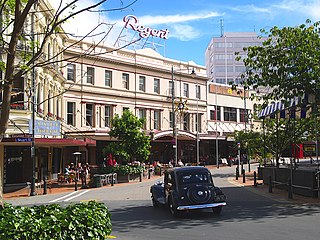
The Regent Theatre is a theatre in Dunedin, New Zealand, with a seating capacity of about 1,650. It is in The Octagon, the city's central plaza, directly opposite the Municipal Chambers and close to the Dunedin Public Art Gallery.
7. Dunedin Jewish Congregation
The Dunedin Synagogue is a Progressive Jewish congregation and synagogue, located in North Dunedin, on the South Island of New Zealand. It is reputedly the world's southernmost permanent synagogue, although a further synagogue operated briefly in King Edward Street, South Dunedin from late 2017 until 2019.
8. Dunedin Botanic Garden
The Dunedin Botanic Garden is located at the northern end of central Dunedin, in the South Island of New Zealand. The garden is close to the University of Otago and one of the city's most historic cemeteries, the Northern Cemetery, on a spur of Signal Hill and on the river plain immediately below it.
9. Cargill's Castle
The ruins of Cargill's Castle stand on a promontory overlooking the Pacific Ocean in New Zealand's southern city of Dunedin. It is one of about ten castles in New Zealand, the other one in Otago being nearby Larnach Castle. More a castle in name than in fact, this Italianate mansion was built for Edward Cargill, eighth child of city founder William Cargill, in the late 19th century, who called it The Cliffs. Designed by the young architect Francis Petre, and built in concrete by Harry Lyders at a cost of £14,000, it was completed in 1877. Several kilometres south of the castle is Tunnel Beach, so named because this quiet beach is only accessible through a steeply sloping tunnel cut into the 60 metres (200 ft) high cliffs by the Cargill family. It is also very likely that Petre was the supervisor of the construction of the tunnel. While designing the house, Petre fell in love with Cargill's daughter Margaret. After a difficult courtship the couple were eventually permitted to marry, the wedding taking place in the villa's principal salon on 1 March 1881.
10. Stuart Memorial
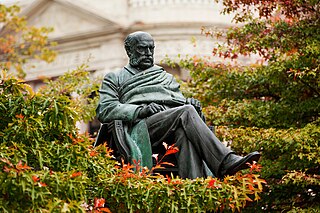
The Stuart Memorial is a statue of clergyman Donald McNaughton Stuart located in central Dunedin, New Zealand. It sits adjacent to Queens Gardens, close to a statue of Queen Victoria. The memorial is a bronze statue of Stuart seated in a solemn pose, atop a large concrete, granite, and andesite plinth. Stuart was a locally renowned minister, educationalist, and community leader, and shortly after his death in 1894, a memorial committee was established. After several months of community fundraising, the committee contracted Wellington-based artist William Leslie Morison to model the statue, the first major civic commission given to a New Zealand artist. With a plaster model by Morison used as the base, the statue was cast at the Moore foundry near London.
11. Holy Trinity - Port Chalmers
Holy Trinity Church is an heritage-listed Anglican church located in Port Chalmers, Otago, New Zealand. Completed in 1874, the Academic Gothic Revival church building is constructed in volcanic stone and has some fine stained glass, and is listed as a Category I Historic Place by Heritage New Zealand. Together with St Barnabas Church, Warrington, Holy Trinity Church is part of the Port Chalmers-Warrington Parish of the Diocese of Dunedin.
12. Signal Hill
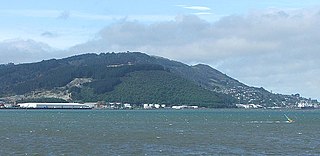
Signal Hill is a prominent landform in the city of Dunedin, New Zealand. It is located close to, and due north of, the head of the Otago Harbour and reaches an elevation of 393 m (1289 ft). The suburbs Ravensbourne, St. Leonards, and Opoho lie on its southern, eastern, and northwestern flanks, respectively. To the northwest is North East Valley, the thalweg of Lindsay Creek, a tributary of the Water of Leith. The southernmost spur of Signal Hill, Logan Point, has been extensively quarried for road gravel. State Highway 88 skirts the foot of the hill close to the edge of the Otago Harbour.
13. Beverly-Begg Observatory
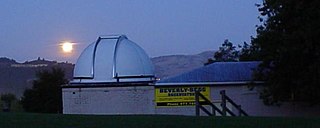
The Beverly-Begg Observatory is a New Zealand astronomical observatory, situated in Robin Hood Park in the Belleknowes part of Dunedin's town belt. It was established in 1922 by the Dunedin Astronomical Society (DAS) and is the home of the group.
14. Flagstaff
Flagstaff, known in Māori as Te Whanaupaki, is a prominent hill overlooking the northwest of the city of Dunedin, in New Zealand's South Island. Together with Mount Cargill, which lies to its northeast, it dominates the skyline of the city. Flagstaff lies seven kilometres to the north of Dunedin's city centre.
15. Dunedin Museum of Natural Mystery
The Dunedin Museum of Natural Mystery is a private museum of bones, bone art, ethnographic artifacts, and assorted curios in Dunedin, New Zealand. Created by mural artist and sculptor Bruce Mahalski, in his Royal Terrace residence, it opened to the public in March 2018.
16. The Oval
The Kensington Oval, formerly known as the South Dunedin Recreation Ground, is a park and sports ground in Kensington, Dunedin, New Zealand. It is also known as just The Oval, although this name has become less common in recent years due to the potential confusion with the University Oval in the north of the city.
17. Coptic Orthodox Church
St Andrew's Presbyterian Church was a prominent church in Dunedin, New Zealand. Designed by pre-eminent Dunedin Robert Lawson it was constructed in 1870 to serve a rapidly developing area of the city which became notorious for its slum housing, poverty and crime which led to it being referred to as the "Devil's Half-Acre" from 1873 onwards. The church is best known for its long time crusading minister the Reverend Rutherford Waddell. Waddell's 'Sin of Cheapness' sermon which was a landmark in New Zealand's social and labour history was delivered from its pulpit. It eventually closed as a place of Presbyterian worship in 1978 and after briefly serving as a place of worship for the Word of Life Pentecostal Church it was purchased by the Coptic Orthodox Church in 2000, who renamed it the Archangel Michael Coptic Orthodox Church.
18. Toroa 1989
Toroa is a 1989 sculpture by New Zealand artist Peter Nicholls. It is located on the foreshore of Otago Harbour in the city of Dunedin, New Zealand. It is part of the collection of Dunedin Public Art Gallery.
19. St Matthew's, Dunedin
St Matthew's Church is an inner-city Anglican church, located on the City Rise in Dunedin, New Zealand. Designed by William Mason, the foundation stone was laid on 11 July 1873 and the building was consecrated on 3 December 1874. It cost NZ£4,874 to construct which wasn't paid off until 1901. It comfortably seated 750 people.
Share
How likely are you to recommend us?
Disclaimer Please be aware of your surroundings and do not enter private property. We are not liable for any damages that occur during the tours.
